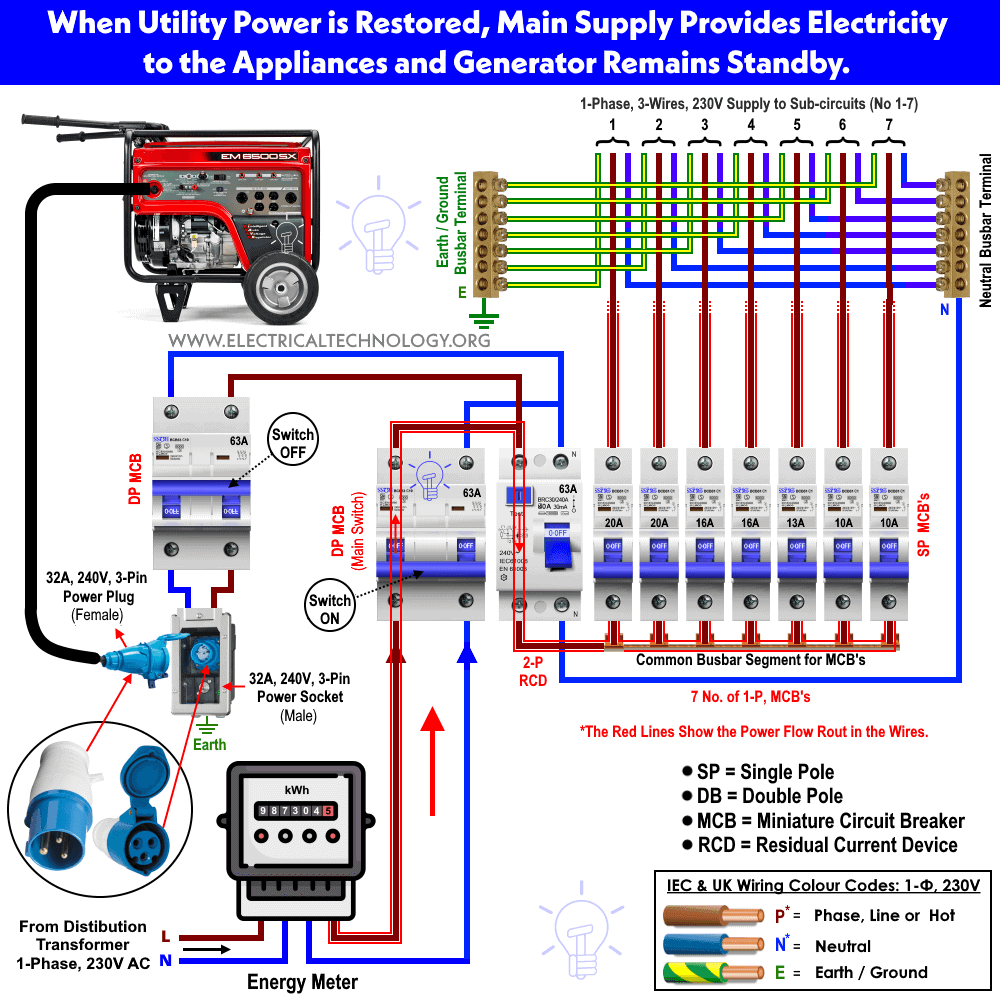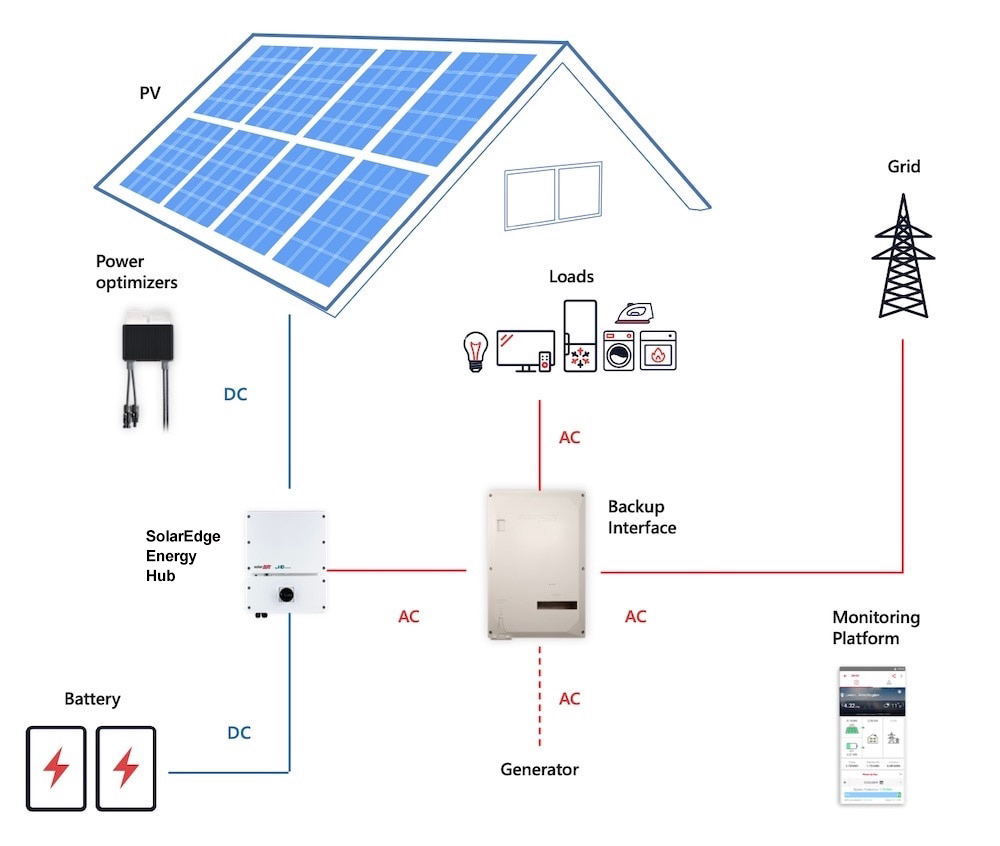“Solar panel wiring with backup generator”
Introduction to Solar Panel Wiring
Before diving into the details of solar panel wiring with a backup generator, it’s essential to understand the basics of solar panel wiring. A typical solar panel system consists of multiple components, including:
- Solar panels: These are the photovoltaic (PV) panels that convert sunlight into electrical energy.
- Charge controller: This device regulates the flow of energy from the solar panels to the battery bank, preventing overcharging and ensuring the batteries are properly charged.
- Battery bank: A collection of deep cycle batteries that store excess energy generated by the solar panels during the day for use at night or during periods of low sunlight.
- Inverter/charger: This device converts the DC power from the solar panels and battery bank into AC power, which is usable by household appliances.
- Load center: This is the main electrical panel that distributes power to the various circuits in the building.
Adding a Backup Generator to the Solar Panel System

A backup generator is a fossil fuel-powered generator that provides power to the building when the solar panel system is unable to generate enough energy. The backup generator is typically connected to the load center, and its output is synchronized with the solar panel system’s output to ensure seamless switching between the two power sources.
The benefits of adding a backup generator to a solar panel system include:
- Reliability: A backup generator ensures that the building has a reliable source of power, even during periods of low sunlight or at night.
- Flexibility: A backup generator allows the building to use more power than the solar panel system can generate, which is particularly useful for buildings with high energy demands.
- Convenience: A backup generator eliminates the need for load shedding or rationing energy during periods of low sunlight.

Wiring the Solar Panel System with a Backup Generator
Wiring a solar panel system with a backup generator requires careful planning and attention to detail to ensure safe and efficient operation. The following steps provide a general overview of the wiring process:
- Install the solar panel array: Mount the solar panels on the roof or in a suitable location, ensuring they are securely fastened and angled for optimal energy production.
- Connect the solar panels to the charge controller: Use suitable wiring and connectors to connect the solar panels to the charge controller, following the manufacturer’s instructions.
- Connect the charge controller to the battery bank: Connect the charge controller to the battery bank, ensuring the correct polarity and voltage ratings are observed.
- Connect the battery bank to the inverter/charger: Connect the battery bank to the inverter/charger, following the manufacturer’s instructions.
- Connect the inverter/charger to the load center: Connect the inverter/charger to the load center, ensuring the correct voltage and frequency ratings are observed.
- Install the backup generator: Install the backup generator in a well-ventilated area, following the manufacturer’s instructions and local building codes.
- Connect the backup generator to the load center: Connect the backup generator to the load center, ensuring the correct voltage and frequency ratings are observed.
- Install an automatic transfer switch (ATS): An ATS is a device that automatically switches between the solar panel system and the backup generator, depending on the availability of power. Install the ATS between the load center and the backup generator.
- Configure the system: Configure the system to prioritize the solar panel system as the primary power source and the backup generator as the secondary power source.

Safety Considerations
When wiring a solar panel system with a backup generator, it’s essential to follow safety guidelines to prevent electrical shock, fires, and other hazards. Some key safety considerations include:
- Use suitable wiring and connectors: Use wiring and connectors that are rated for the voltage and current requirements of the system.
- Follow manufacturer’s instructions: Follow the manufacturer’s instructions for each component, including the solar panels, charge controller, battery bank, inverter/charger, and backup generator.
- Ensure proper grounding: Ensure the system is properly grounded to prevent electrical shock and ensure safe operation.
- Install surge protection devices: Install surge protection devices (SPDs) to protect the system from power surges and spikes.
- Regular maintenance: Regularly inspect and maintain the system to ensure safe and efficient operation.
Best Practices for Solar Panel Wiring with a Backup Generator
To ensure safe and efficient operation of a solar panel system with a backup generator, follow these best practices:
- Hire a licensed electrician: Hire a licensed electrician with experience in solar panel installations to ensure the system is installed correctly and safely.
- Use high-quality components: Use high-quality components that are specifically designed for solar panel systems and backup generators.
- Follow local building codes: Follow local building codes and regulations for solar panel installations and backup generators.
- Monitor the system: Monitor the system regularly to ensure it’s operating efficiently and safely.
- Perform regular maintenance: Perform regular maintenance tasks, such as cleaning the solar panels and checking the battery bank, to ensure the system operates at optimal levels.
Conclusion
Solar panel wiring with a backup generator is a complex process that requires careful planning, attention to detail, and adherence to safety guidelines. By following the steps outlined in this article and observing best practices, homeowners and businesses can create a reliable and efficient solar panel system with a backup generator that provides power during periods of low sunlight or at night. Remember to hire a licensed electrician with experience in solar panel installations to ensure the system is installed correctly and safely. With a well-designed and well-installed solar panel system with a backup generator, you can enjoy the benefits of renewable energy while minimizing your reliance on the grid.





